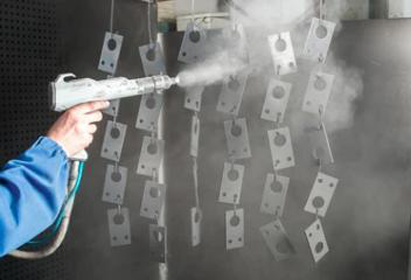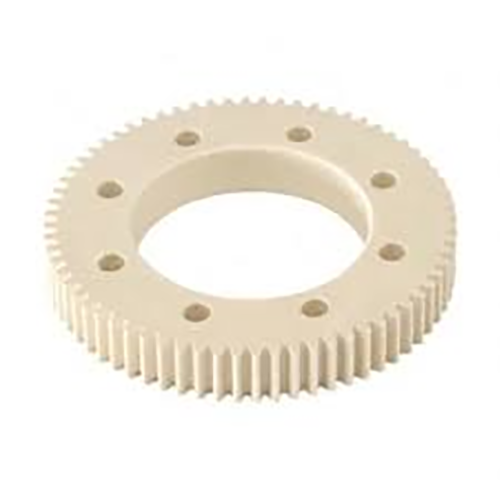
Producing the required exterior polish for a processed workpiece is critical.
- Technical drawings lay out precise surface criteria for components
- Drawings commonly cite Ra, meaning root mean square average, to measure texture
- Comprehending finish specifications is crucial to meet operational standards
- A well-defined surface finish can impact factors such as lubrication, friction, and durability
- Accurate interpretation of callouts is required to realize the targeted surface
CNC Machining: Precision Engineering Defined

Robotic-assisted machining defines a modern manufacturing practice employing digital instructions the machinery forms elaborate parts with exactness.
- CNC systems permit manufacture of precise components from diverse substrates
- Multifaceted CNC utility supports electronics, automotive, and aerospace production
- Programmed machining assures dependable consistency across manufacturing cycles
Across prototyping through full-scale production CNC machining serves as a cornerstone in contemporary manufacturing
CNC Specs Explained
Parsing spec sheets may feel challenging at initial inspection
Nevertheless simple study and a stepwise method let you read technical specifications
Commence with recognizing main metrics: spindle rpm, feed, precision, work volume, control system
Each metric impacts the machine’s aggregate capability.
Consider that higher spindle velocity suits pliant materials while elevated feed boosts capacity.
Seeing these associations aids in selecting the correct machine for your use
It’s wise to study manufacturer documentation comprehensively.
Vendor literature commonly contains useful guidance and explains terms
What You Should Know About CNC Machines
Programmed machining equipment comprises computer-managed tools for exact automated fabrication of diverse materials Operation relies on parsing G-code directives to manage cutting devices and toolpaths.
- Common CNC classes include milling machines, turning lathes, routing systems, plasma cutters
- Machining operations fit metal, plastic, wood, and composite workpieces
- Furthermore CNC machines allow for rapid prototyping and low-volume production runs making them valuable assets for small businesses and research centers
Core Concepts of CNC Machinery
These tools showcase a blend of mechanical exactness and intelligent software command Versatile machinery employs programmed code to autonomously produce simple parts and complex assemblies Underlying principle converts virtual designs into actual manufactured items.
- CNC machining
- Software-guided fabrication
It includes exact tool motions driven by CNC instructions Skilled staff determine cutting conditions, observe operations, and verify finished part quality.
Influence of Finish on CNC Operations
Delivering planned surface condition during machining is necessary It impacts both functional performance and surface look Substrate properties, machining variables, and post-process methods shape surface outcome.
Refined surfaces boost longevity; rough surfaces can diminish functional performance CNC systems provide diverse tooling and strategies to reach required finishes.
- Including selection of alternative tool profiles |ceramic cutters|cutting speeds to achieve a desired surface finish
- Alternatively post-processing methods like polishing grinding sanding can be employed to improve the surface finish
Appreciating the link between settings and surface quality helps achieve ideal finishes.
Understanding CNC Machines: A Beginner's Guide
Computerized machining precisely produces parts from metals, plastics, and other materials They apply digital directives to fabricate detailed geometries consistently A fundamental understanding of CNC machine operation including the role of G-code programming and tool selection is essential for successful machining processes
Sectors served include aerospace, automotive, manufacturing, medical, and electronics fields From turbine components to precision mold cores, CNC supports manufacture of complex parts
Surface Finish Notation for Machined Components
Right specification of finish is necessary for CNC-produced parts It verifies compliance with intended functional and aesthetic goals Callouts commonly use the roughness average (Ra) system to denote surface finish Reported in µm or inches, the metric indicates average irregularity magnitude.
When specifying a surface finish callout consider both the required level of smoothness and the intended application of the part

Often a polished surface is selected when precise tolerance and fit are required
More pronounced surface profiles help applications relying on friction or traction
Use explicit finish instructions on design documents to convey the surface requirement Provide the roughness average and detail supplemental processes or treatments needed.
Observe that unambiguous finish specifications are vital for manufacturing outcomes
CNC Machine Types and Their Functions
Numerical control machining comprises numerous machine types engineered for diverse applications They integrate CAD-driven toolpaths to guide cutters for precise component production.
- Boring and drilling equipment generate accurate holes and internal features
- Grinders refine surfaces and achieve tight dimensional tolerances via abrasion
- Plasma machines slice thick steel and ferrous metals rapidly using plasma arcs
Equipment choice hinges on material, design intricacy, and precision requirements Machine-specific strengths enable applications in fields ranging from aerospace to automotive engineering.
Achieving Optimal Surface Finish with CNC Machining
Achieving a superior surface finish is crucial in numerous manufacturing processes and CNC machining offers an exceptional method for achieving this goal By leveraging precise control over cutting parameters such as feed rate spindle speed and tool geometry machinists can effectively manipulate the material removal process to produce surfaces with minimal imperfections Additionally superior tool grades and effective lubrication aid in producing refined textures Strategic toolpath planning and precise machine adjustments result in superior finish quality.
Achieving Surface Finish in CNC Programming
Skillful CNC programming directly impacts the final surface quality Machining parameter combos such as feed, rpm, and tool geometry set the surface characteristics Precise setting selection and effective coolant control support high-quality finishes.
- Besides that systematic tool upkeep and monitoring ensure sustained surface quality Additionally routine tool checks and upkeep maintain consistent finish quality Moreover scheduled tool maintenance and inspection preserve what does mean cnc surface performance
- To improve surface outcome account for material, roughness target, and application
- Simulation aids in adjusting parameters virtually to prevent surface problems
- Additionally routine tool checks and upkeep maintain consistent finish quality
